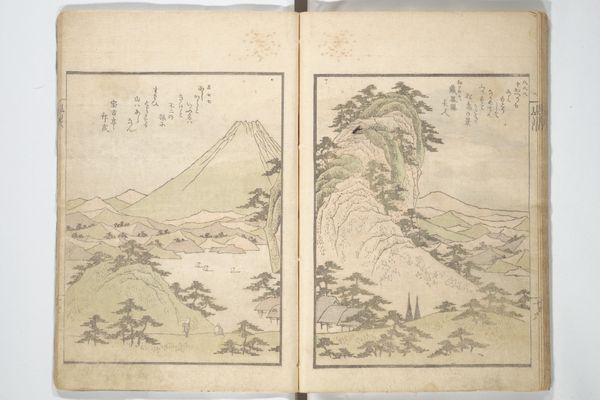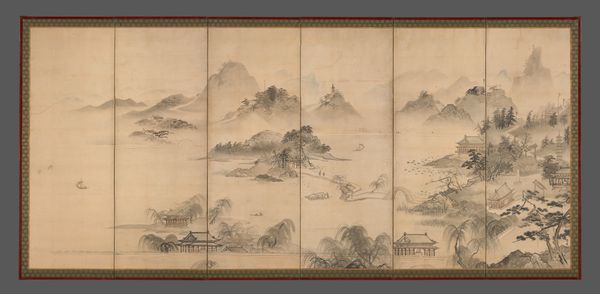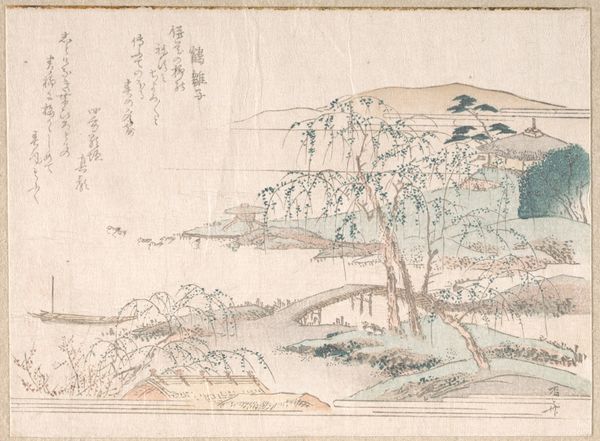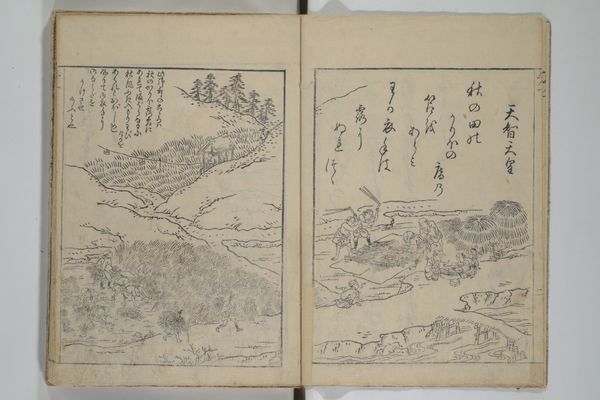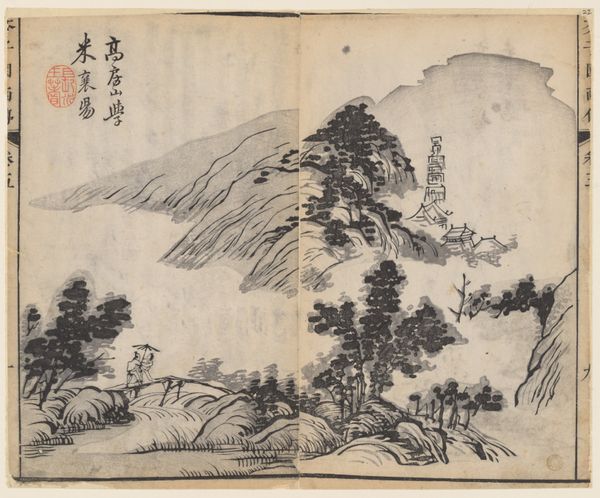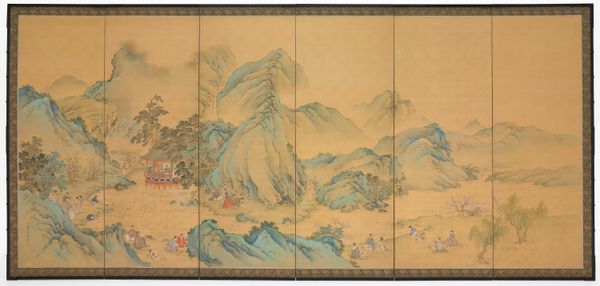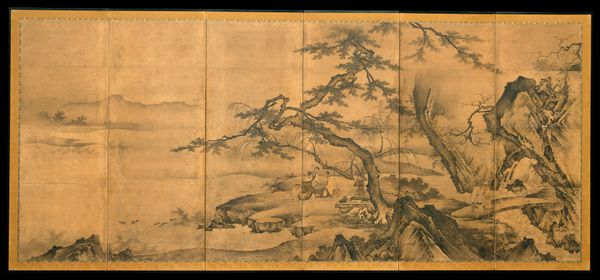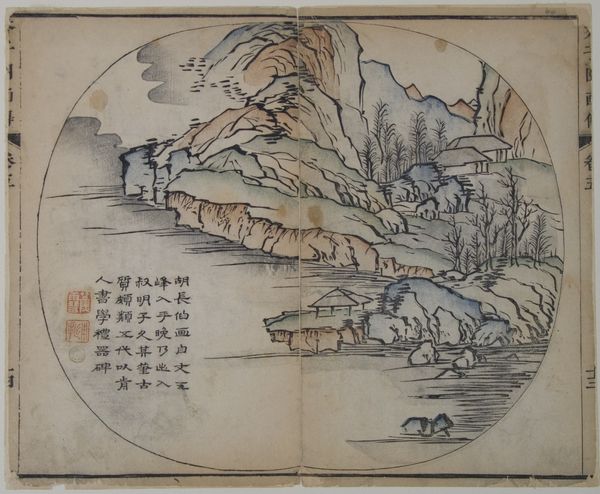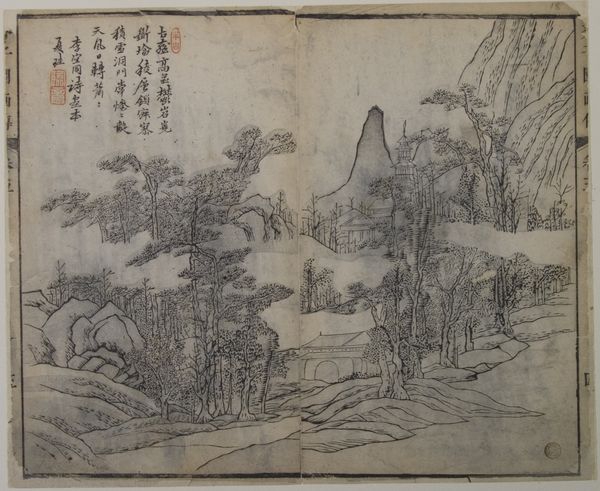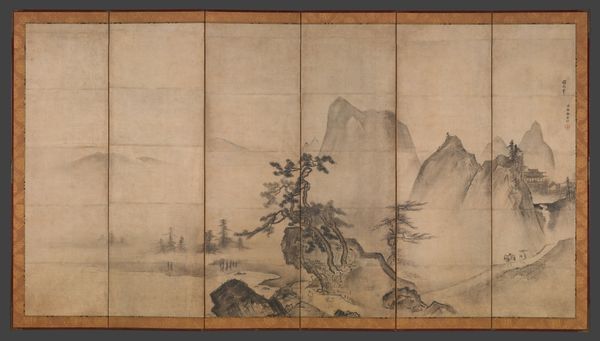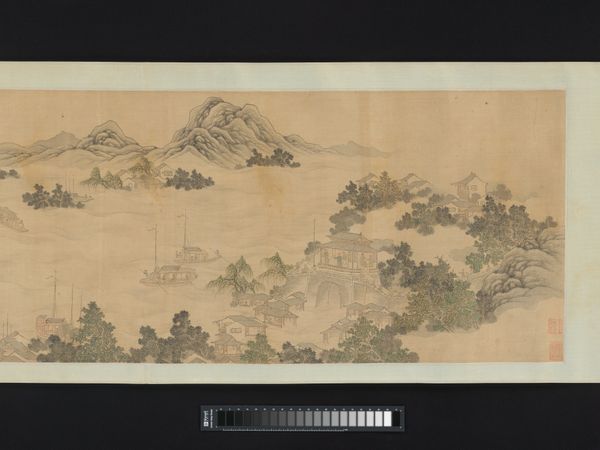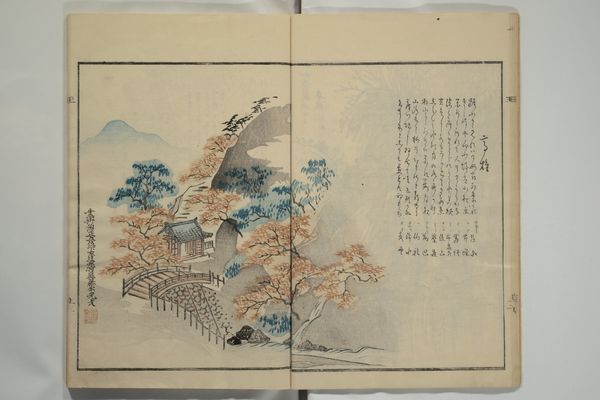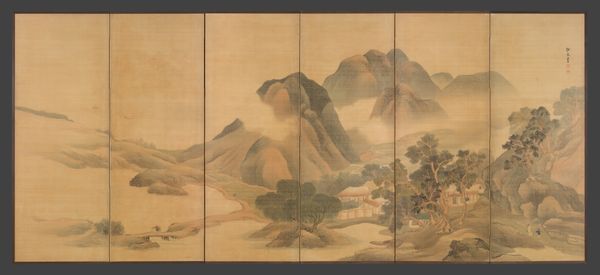
Dimensions: Image: 24 9/16 × 60 5/8 in. (62.4 × 154 cm) Overall with mounting: 67 1/2 × 25 3/8 in. (171.4 × 64.5 cm)
Copyright: Public Domain
Curator: Looking at Nukina Kaioku’s six-panel screen, created in 1834, what strikes you first, Editor? It’s entitled "Lake Biwa in Four Seasons," currently residing at the Metropolitan Museum. Editor: It’s the wash-like quality. A lightness, almost as if the watercolor is barely clinging to the paper. You see right through it; an ethereal rendering of nature, a half remembered dream perhaps. Curator: The key here, I think, lies in understanding the Yamato-e tradition which prizes indigenous Japanese sensibility over strictly Chinese form, placing importance in the material properties of Japanese papers, as well as native color preferences, specifically associated with nostalgia for a pure homeland untainted by foreign influence. Notice, also, the panel format, its hinging creating the capacity to shift and modulate meaning through both exhibition and use. Editor: The lake itself certainly speaks volumes, the symbolism of water running deep. The rendering is sparse. The lake symbolizes purification and transformation, common motifs in many cultures. This piece feels less about representing the seasons accurately and more about the subtle emotional shifts, capturing impermanence and serenity. The writing itself is so dominant; I read the strokes as potent symbols, declarations perhaps about ownership and pride, each mark bearing intention and memory. Curator: Precisely! In that interplay between the applied pigment and the ground one finds, not a depiction, but rather an inscription of place. We must recognize the work that goes into processing the pigment from its original sources. Who labored to render and apply these pigments to paper? Where do those stories situate themselves with regards to a so-called nostalgic vision of the homeland? Editor: A thought-provoking proposition. The screens may act as filters, modifying one’s experience of space; like memory itself, constantly edited and revised. There's so much to glean from simply observing. Curator: Exactly, a deep dive into material history opens new perspectives, altering the landscape as radically as the passage of time. Editor: I agree. This really encourages reflection.
Comments
No comments
Be the first to comment and join the conversation on the ultimate creative platform.
